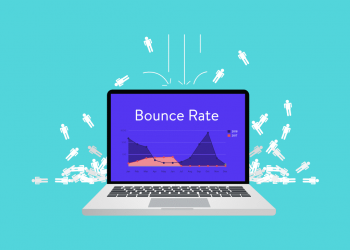Understanding Bounce Rate
How to calculate bounce rate is the percentage of visitors who left your website/webpage from the entry point without doing any activity. Activity will mean clicks made & pages visited. High bounce rate points too the content presented or way it absolutely was presented wasn't relevant towards the entrance options.Visitors landing in your entry page are considered to bounce if they:

Close your window or an open tab
Types a new URL
Leave the site by clicking the BACK button
Click one of the links on the page that can them to an alternative site.
Or the Session timeouts (generally taken as 30 mins)
Why many people are looking for ways to lower Bounce Rate?
The response is simple - The lower the bounce rate, higher the possibility of visitor browsing your website pages and converting.
Google.com analytics specialist Avinash Kaushik states:
"It is basically hard to get a bounce rate under 20%, anything over 35% is cause for concern, and 50% (above) is worrying."
Now, the greater question is - How to control the Bounce Rate?
Content - The content available in your website is the main factor for bounce rate. If the content is relevant to the visitors expectations the likelihood is that they is not going to bounce from your site without visiting other sections of website. For E.g. if your website is about IT Conferences and also on landing page you might be talking about general stuff and never educating the visitors on the benefits of attending your conferences, then visitors more likely to leave your internet site due to insufficient desired information.
Website Load Time - Try to reduce the website load time - It's really nearly impossible to find patient visitors. Instead of using heavy animations about the complete page that takes lot of time to load, use animation only in the banner area and provides text content in remaining section of the page. This will make user read this content and in the mean time your animation will likely load.
Flow - Provide any visitors with proper entry ways to find their way. Do proper linking to the internal pages that guide the crooks to their aspects of interest. Most of the visitors bounce because they were not able to navigate to relevant pages. Make your navigation flow simple to use by categorizing and sub-categorizing.
Above the fold - All your information and facts has to be placed 'above the fold'. This includes your 'call to action buttons'. 'Above the fold' is that area of the website which you see with out a scroll. Research states that 60% - 80% of visitors won't scroll your website 'down the fold', and so the best opportunity is lying 'above the fold'.
Popups - No one likes Popups, particularly when then appear as an unwanted guest. They are the biggest distraction, each time a visitor wants some important information. Even the feedback popup, sometimes annoys the visitors and so they bounce.
The previously discussed points can help you reduce your internet site bounce rate
We at AfterTheNet - The Web Strategy Company follow the above mentioned keyword tactic to supplement our clients most abundant in basic to the most advanced methods for any goal they decide to reach using website. Our step wise approach provides them the complete visibility with their website - that they can are deprived of very often, in deficiency of a trustworthy resource.